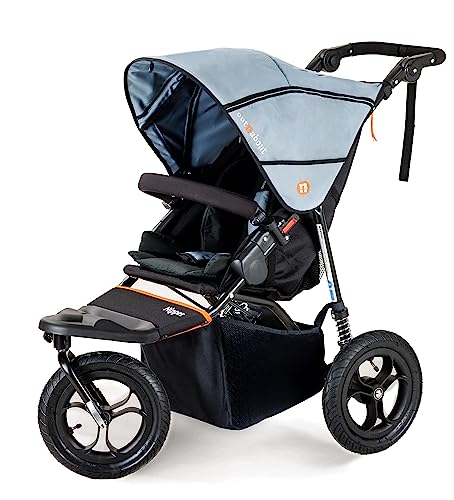12 Companies That Are Leading The Way In Pushchairs
Strollers and Pushchairs: The Ultimate Guide for Parents
Selecting the right stroller or pushchair is among the most necessary decisions brand-new parents will make. With a variety of options readily available, understanding the distinctions and functions can considerably influence the experience of both moms and dads and kids. This comprehensive guide intends to light up the differences between both, the aspects to think about when acquiring, and responses to frequently asked concerns.
Comprehending Strollers and Pushchairs
Strollers and pushchairs are frequently utilized interchangeably, but subtle differences set them apart. Pram And Stroller Sale is generally designed for infants and young children, using a more versatile method with added functions for convenience and safety. On the other hand, pushchairs are usually aimed at older babies who can stay up unaided and tend to be more lightweight and portable.
Secret Differences Between Strollers and Pushchairs
Feature
Stroller
Pushchair
Age Range
Newborn to young child
Typically for 6 months to 3 years
Weight
Generally much heavier due to extra features
Lighter and often easier to carry
Recline Position
Can normally recline totally for infants
Restricted recline; often upright
Storage Space
More storage compartments and devices available
Minimal storage, often simply a small basket
Convenience
Created with more padding and support
Less padding, lighter frame for ease of usage
Foldability
Might have complex folding systems
Frequently created to fold easily and compactly
Factors to Consider When Buying a Stroller or Pushchair
When picking between a stroller or pushchair, numerous factors can form your decision. Here are some important considerations:
1. Security Features
- Harness system (5-point is the safest)
- Stability and strength of the frame
- Brakes that lock safely
2. Convenience
- Padding and assistance for the kid
- Adjustable seat positions
- Ventilation for heat
3. Size and Weight
- How simple is it to transfer?
- Will it fit in your vehicle?
- Does it use up excessive storage area in your home?
4. Versatility
- Is it adaptable for automobile seats or carrycots?
- Can it manage various terrains (city vs rural)?
5. Expense
- What is your spending plan?
- Does the stroller/pushchair offer value for its functions?
6. Reduce of Use
- How easily can it be folded and unfolded?
- Is it easy to browse through crowds or tight areas?
7. Durability
- What products are utilized?
- The length of time is the service warranty?
8. Brand Reputation
- Try to find brand names understood for producing quality items.
- Read reviews from other moms and dads.
The Types of Strollers and Pushchairs
Strollers and pushchairs come in various styles, each catering to specific needs. Here's an introduction:
1. Standard Strollers
- Durable and well-padded.
- Perfect for everyday use.
2. Light-weight Strollers
- Really portable and simple to carry.
- Ideal for travel.
3. Jogging Strollers
- Designed for active parents.
- Can handle rugged surfaces.
4. Convertible Strollers
- Can adapt from a single to double stroller.
- Flexible and grows with the family.
5. Travel Systems
- Consists of a baby safety seat and a stroller.
- Offers smooth shifts from automobile to stroller.
6. Umbrella Strollers
- Incredibly portable and low-cost.
- Best for fast trips and older babies.
Kind of Stroller
Pros
Cons
Basic
Strong, comfortable
Heavier and bulkier
Lightweight
Easy to bring
Limited features
Jogging
Great for workout and outdoor usage
May not be appropriate for babies
Convertible
Versatile for growing households
Bulkier than basic strollers
Travel System
Benefit of combined requirements
Can be costly
Umbrella
Really portable
Less resilient
FAQs About Strollers and Pushchairs
Q1: At what age can a baby utilize a stroller?
A lot of strollers are appropriate for usage from birth if they completely recline. Make sure to inspect maker guidelines, as some may just accommodate babies over six months.
Q2: How do I clean my stroller or pushchair?
Most strollers have removable and washable materials. Use mild soap and water for the frame and inspect the fabric labels for particular cleaning guidelines.
Q3: Can I utilize a stroller on different surfaces?
Yes, particular types, like jogging strollers or all-terrain strollers, are specifically developed for unequal surface areas. Nevertheless, some lightweight designs are not suitable for rough terrain.
Q4: How long can I expect my stroller to last?
Quality strollers can last a number of years, typically until the child is around 4 to 5 years old, depending upon usage and care.
Q5: Are strollers safe for overnight sleeping?
While some strollers provide flat recline positions that appropriate for baby sleep, it's vital to follow security standards and keep track of the child while in the stroller.
Choosing the best stroller or pushchair is a decision that extends beyond simple option; it enhances the parenting experience and guarantees the safety and convenience of the child. By understanding the distinctions, examining various aspects, and checking out the types available, moms and dads can make an educated choice that accommodates their way of life and satisfies the needs of their growing household. Remember to always prioritize safety and comfort above whatever!
